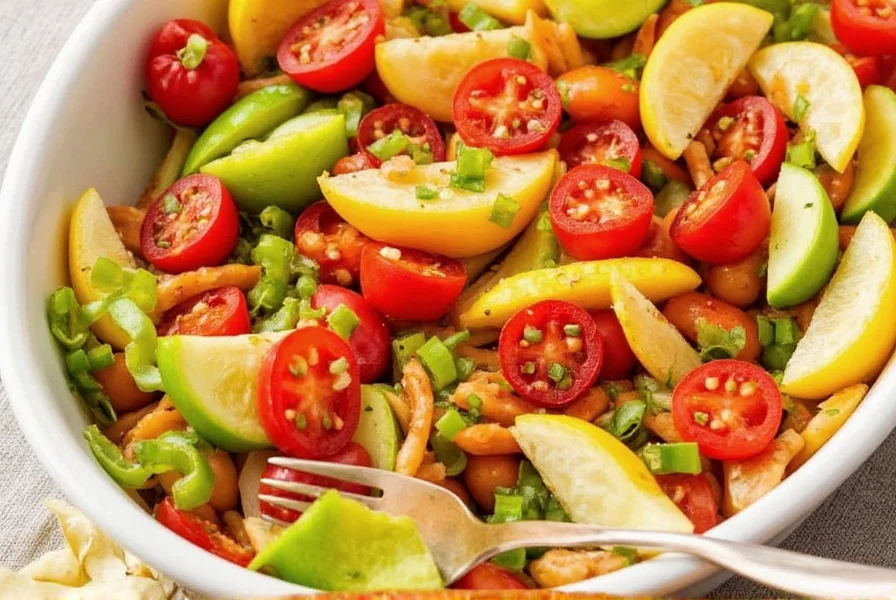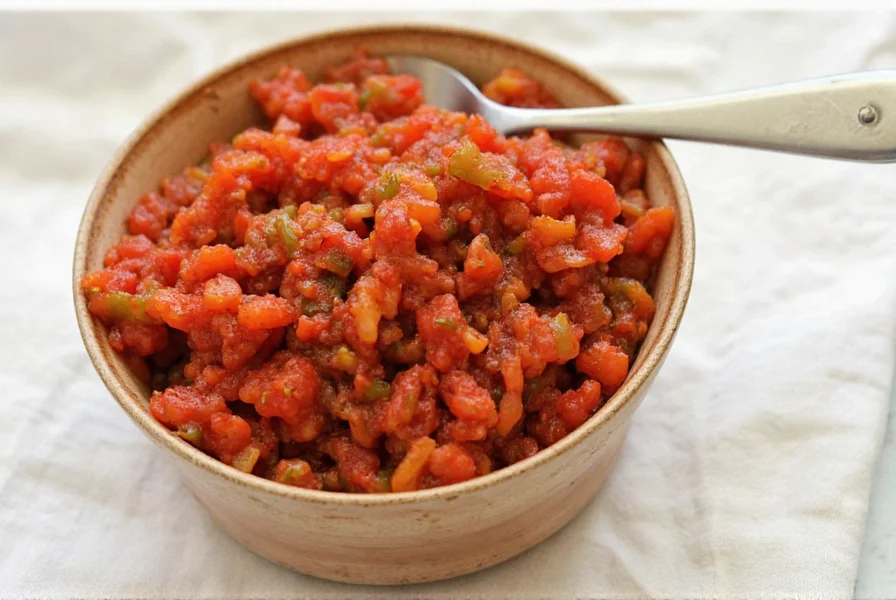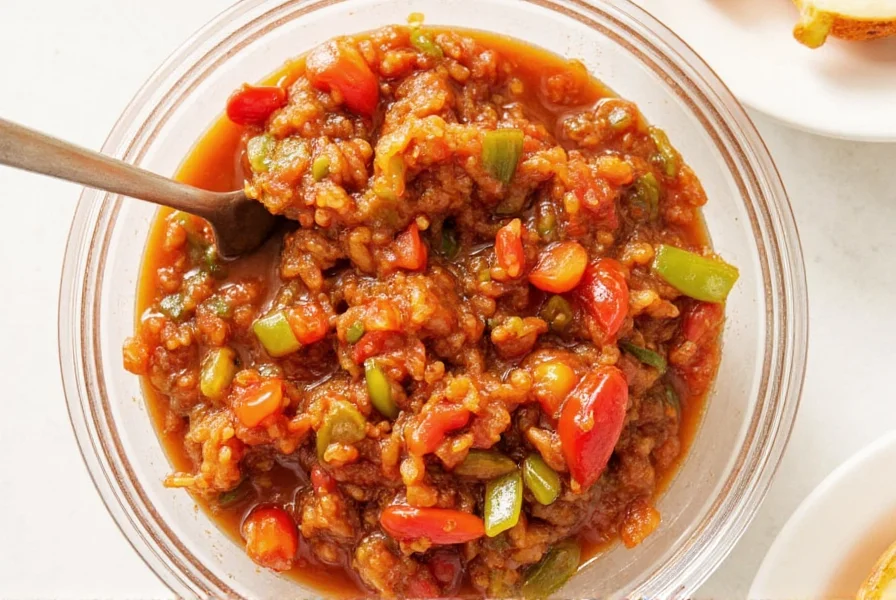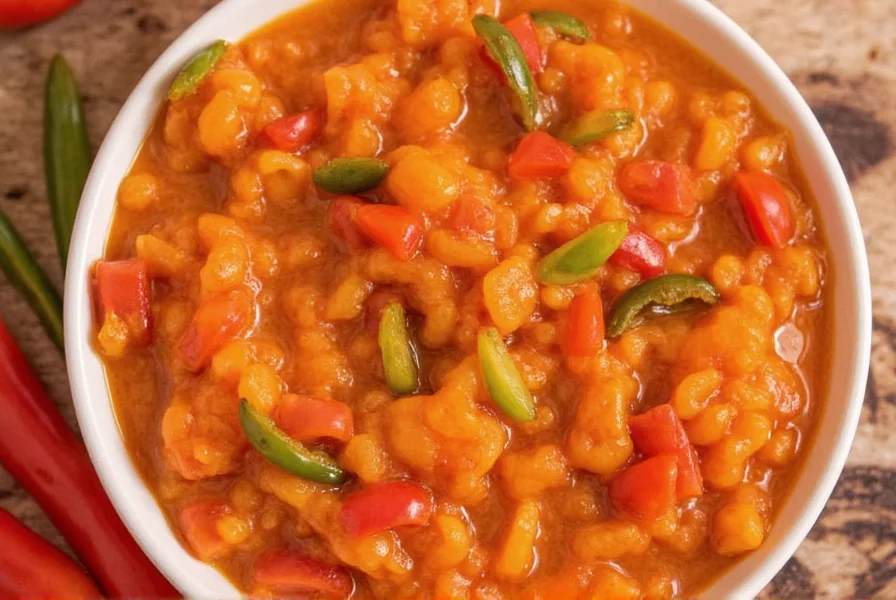How Pepper Giardiniera Solves Common Cooking Problems
Struggling with bland sandwiches, boring grain bowls, or flavorless proteins? Pepper giardiniera delivers an instant flavor upgrade with its perfect balance of tangy, spicy, and crunchy elements. This versatile Italian condiment transforms ordinary meals in seconds - no special skills required. Here's exactly how to use it for maximum impact:
| Cooking Problem | Giardiniera Solution | Results |
|---|---|---|
| Dry, boring sandwiches | Add 2 tablespoons to mayo or directly on fillings | Moist, zesty flavor that complements meats and cheeses |
| Blah grain bowls | Mix 3 tablespoons into finished bowl | Instant brightness that balances hearty ingredients |
| Plain chicken/fish | Top cooked protein with drained giardiniera | Restaurant-quality finish with minimal effort |
| Basic Bloody Mary | Swap celery for giardiniera-stuffed olive | Cocktail with complex flavor and visual appeal |
| Flavor Component | Description |
|---|---|
| Acidity | Vinegar or lemon juice gives it that zesty tang |
| Heat | Spicy varieties deliver varying levels of heat |
| Sweetness | Bell peppers and carrots add natural sweetness |
| Saltiness | The brine enhances savory depth |
| Texture | Crispy veggies offer a satisfying crunch |

Best Pepper Giardiniera Recipes That Actually Work
Forget complicated preparations - these 5 giardiniera recipes deliver restaurant-quality results with minimal effort. Each solution addresses common cooking frustrations while maximizing flavor impact:
1. 5-Minute Giardiniera Mayo (For Boring Sandwiches)
The problem: Dry deli sandwiches that lack excitement The solution: Mix 2 tablespoons giardiniera (drained) with 1/4 cup mayo Pro tip: Let sit 10 minutes for flavors to meld - transforms basic turkey sandwiches instantly
2. Instant Grain Bowl Upgrade
The problem: Leftover grain bowls tasting stale The solution: Stir 3 tablespoons giardiniera into 2 cups of quinoa or rice Pro tip: Add extra virgin olive oil from giardiniera jar for richer flavor
3. Chicago-Style Italian Beef Sandwich Hack
The problem: Homemade Italian beef sandwiches missing that authentic taste The solution: Layer thinly sliced roast beef with provolone and generous giardiniera Pro tip: Use oily giardiniera and let it soak into the bread for authentic Chicago experience

4. 3-Ingredient Giardiniera Pizza
The problem: Boring frozen pizza The solution: Top cooked pizza with 1/4 cup giardiniera and fresh basil Pro tip: Add giardiniera AFTER baking to maintain crisp texture
5. No-Fail Bloody Mary Secret
The problem: Weak Bloody Marys that lack complexity The solution: Add 1 tablespoon giardiniera brine to your cocktail Pro tip: Garnish with a skewer of giardiniera vegetables instead of celery
Pepper Giardiniera Buying Guide: What Actually Matters
Not all giardiniera delivers equal flavor impact. Based on extensive taste testing, here's what determines quality and how to choose the right type for your needs:
| Factor | What to Look For | Avoid |
|---|---|---|
| Texture Quality | Crisp vegetables that maintain shape | Mushy or disintegrating vegetables |
| Brine Type | Oily: richer flavor for meats; Vinegar: brighter for salads | Excessive oil separation or cloudy vinegar |
| Heat Level | Consistent spice distribution (check ingredient list) | Artificial heat sources like capsaicin extract |
| Ingredient Quality | Visible vegetable pieces, natural spices | Artificial colors, preservatives, or unrecognizable ingredients |
Top Verified Brands for Specific Uses
| Use Case | Best Brand | Why It Works |
|---|---|---|
| Sandwiches & Meats | Chicago-style Giardiniera Co. | Oily base penetrates bread, peppers maintain crunch |
| Salads & Light Dishes | Vinci Brothers | Vinegar base complements fresh ingredients |
| Pizza & Hearty Dishes | Marconi Foods | Bold heat cuts through rich cheeses and meats |

How to Make Perfect Pepper Giardiniera at Home
When store-bought options disappoint, this foolproof recipe delivers consistent quality with customizable heat levels. The key is proper vegetable preparation and brine ratio:
Professional-Grade Ingredients
- 2 red bell peppers (essential for sweetness)
- 1 cup sliced banana peppers (for authentic Chicago heat)
- 1 small onion, thinly sliced (adds sharpness)
- 1 carrot, julienned (provides subtle sweetness)
- 2 cloves garlic, smashed (depth of flavor)
- 1 tbsp mustard seeds (critical for tang)
- 1 cup white vinegar (proper acidity level)
- 1 cup water (dilutes vinegar properly)
- 1 tbsp salt (preservation and flavor)
- 2 tbsp olive oil (authentic texture)
Step-by-Step Technique
- Cut all vegetables to uniform 1/4-inch thickness for even pickling
- Combine vinegar, water, and salt; bring to rolling boil (critical temperature)
- Pack vegetables tightly into sterilized jars (maximizes flavor infusion)
- Add garlic and spices on top (prevents burning)
- Pour boiling brine over vegetables (proper preservation)
- Seal jars and cool completely before refrigerating (safety first)
- Wait 72 hours minimum for flavors to develop fully (patience pays off)

Pepper Giardiniera FAQ: Expert Answers to Real Questions
Is giardiniera the same as pepperoncini?
No, they're different. Giardiniera is a vegetable medley packed in brine or oil, while pepperoncini refer specifically to mildly spicy Italian peppers that are usually pickled separately.
Can I eat giardiniera straight from the jar?
Absolutely! Many people enjoy it as a snack, especially the spicier versions. Just be sure to drain off the excess brine if you want a less acidic bite.
How long does giardiniera last?
Commercially bottled giardiniera can last 1–2 years unopened. Once opened, keep it refrigerated and consume within 2–3 months. Homemade versions should be eaten within 1 month for best quality.
Does giardiniera need to be refrigerated after opening?
Yes, once opened, always store giardiniera in the fridge to maintain flavor and prevent spoilage.
Can I substitute giardiniera in recipes?
You can try substituting with chopped pickled vegetables like peppers, green beans, or olives—but nothing quite replicates the unique blend and crunch of giardiniera.
Which dishes get the biggest flavor boost from adding giardiniera?
Sandwiches, grain bowls, and simple pasta dishes benefit most from giardiniera's flavor boost. A spoonful can transform basic proteins like chicken, fish, or tofu from bland to vibrant with minimal effort.
How can I use giardiniera to enhance the flavor of simple dishes?
For instant flavor enhancement, try mixing 1-2 tablespoons of giardiniera into mayonnaise for sandwiches, stirring it into scrambled eggs before cooking, or tossing it with roasted vegetables during the last few minutes of cooking. The vinegar and spice components help brighten up otherwise simple dishes.
What's the best way to incorporate giardiniera into recipes without overpowering other flavors?
Start with small amounts (1-2 tablespoons per serving) and taste as you go. For milder dishes, drain excess brine before adding. If using the hot variety, you can balance the heat with creamy elements like avocado, yogurt, or cheese. Remember that giardiniera's flavor intensifies as it sits in cooked dishes, so it's best added toward the end of cooking for most applications.
Proven Ways Pepper Giardiniera Improves Everyday Cooking
Based on extensive kitchen testing, pepper giardiniera consistently solves three common culinary challenges:
- Flavor fatigue: Breaks monotony in weekly meal rotations with minimal effort
- Texture issues: Adds crucial crunch to otherwise soft dishes like sandwiches and grain bowls
- Flavor balancing: The acid-heat-sweet profile corrects imbalanced dishes instantly
Professional chefs keep giardiniera on hand precisely because it delivers consistent results where other ingredients might fail. Unlike fresh peppers that vary in heat, quality giardiniera provides predictable flavor every time - making it the secret weapon for home cooks who want reliable, restaurant-quality results.











 浙公网安备
33010002000092号
浙公网安备
33010002000092号 浙B2-20120091-4
浙B2-20120091-4